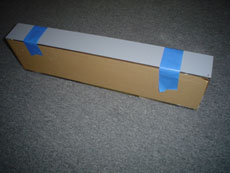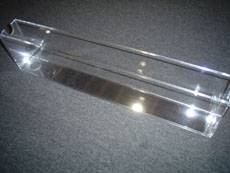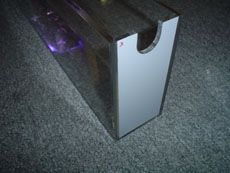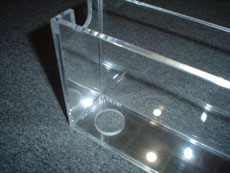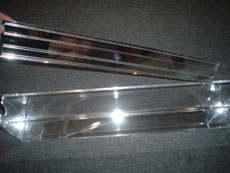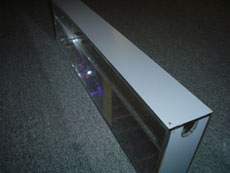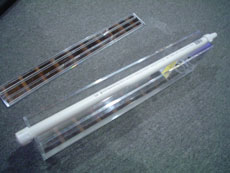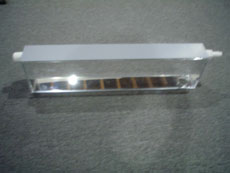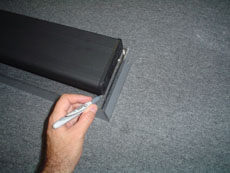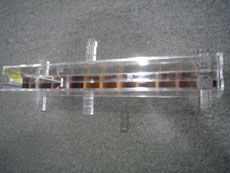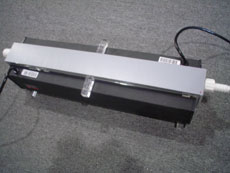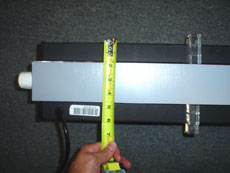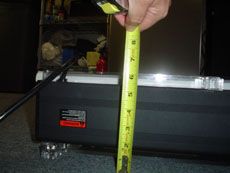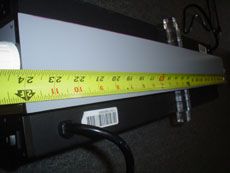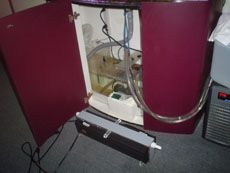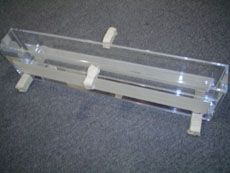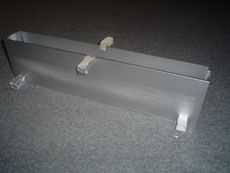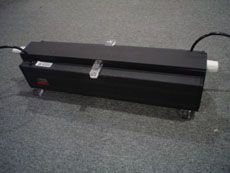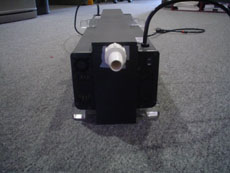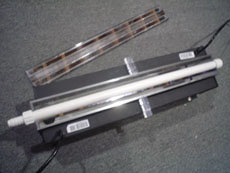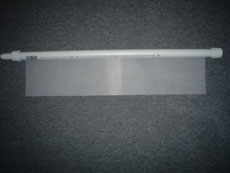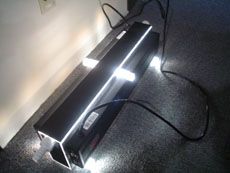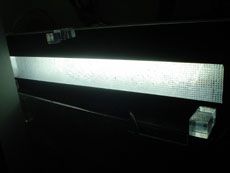It's Time For The Santa Monica 120 Acrylic!
Ok it's time to move my screen from the ugly bucket by the sink (with hoses, wires, timers, etc) to under the tank where it can sit on the sump. The idea for this design came from all the readers who tried to install their screens over their sumps. Low profile is important for me, as it is to anyone without a fish room, so I picked 6" as the max height. That would give me room to lift out the screen and pull it out of the stand, with room to spare. And at 6" height, the pvc pipe will take up 1", leaving 5" for the screen. So the screen will be 5 X 24 = 120 sq in. This is good for a decently-stocked 90 like mine, or a lightly stocked 200 with no real nutrient problems. Here is the initial layout that I gave to the acrylic shop:
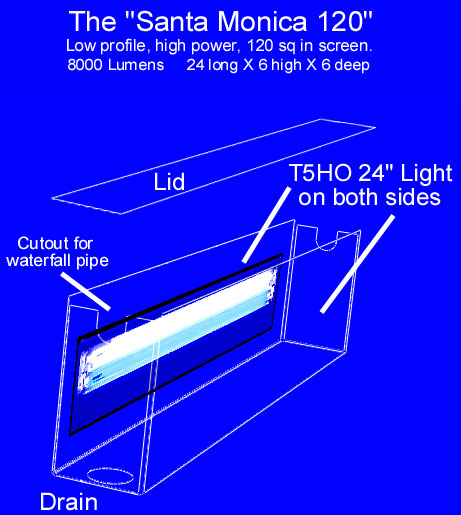
Wide screens like this are more efficient and powerful (with the same light) than tall narrow screens, but require more flow. My screen will need 24" X 35(gph/in) = 840 gph. However the same 120 sq in screen placed vertically would only need 5" X 35(gph/in) = 175 gph. The vertical placement has a disadvantage in that the water at the top gets filtered by the top of the screen, but then has to travel over the lower parts of the screen. Since it's already been filtered at the top, not much happens on the bottom part of the screen. This problem is eliminated with a horizontal screen since all the water that passes over the 5 inches of screen needs filtering.
Another good use for a low-profile screen like this would be for on-top of tank, when you want the pods to drain directly down into the display. Or, if you don't have a sump, the on-top placement would work great if you put the pump in the display.
The acrylic box came back from the acrylic shop, finished beautifully. They still have the plans, so if anyone wants the same box, call Hastings Plastics at 310-829-3449 and say you want the "aquarium algae filter screen box". The only change would be the "U" cutouts for the pipe: Tell them to make them a little larger round, and a little deeper, since the pipe was hard to push into them (and it stuck out a bit which made the lid not close all the way. ). I did a little grinding, and now it's perfect. The cost was about $100, without shipping. Here's how is arrived:
Unwrapped. Notice the bottom and ends are mirrored acrylic, with the mirror facing inwards:
The lid fits mirror-side down:
The pipe fits snug so that little light will escape. I had to grind the "U" cutouts a little bigger and deeper so the pipe would not block the lid:
The lid fit perfectly after the pipe cutouts were enlarged:
Here are the lights. They come with a combo of 10K and actinic:
www.petstore.com/ps_viewItem-idProduct-CU01124-tab-4.html
I removed the bulbs, and got 6500K and 3000K from here:
www.plantlightinghydroponics.com/ge-t5-ho-fluorescent-lamps-c-73_623.html
I'm going to set it up with 6500K on one side and 3000K on the other. Nobody recommednds 10K for macros, except for one person: The guy at Inland Aquatics that has been growing turf screens for 10 years. So, I'll try 10K soon, but not to start. Maybe you can start with 10K on yours and let us know how it works

Then I placed the lights on the acrylic and marked off where the the bulbs will be shining through:
Some method has to be used to mount the lights to the sides. I'm using acrylic blocks and acrylic glue:
The light-mounting is a bit tricky, because the lights need to be removeable, yet be pressed up against the acrylic to minimize light leakage (which would be important for an above-the-tank placement in plain view). The lights are then placed in the mounts:
The overall size ended up being 6.5" high X 6" deep X 24" long:
Here's a size comparison; the inside of the stand was once filled with filtration devices, and now it's just water:
Taped and ready for spray painting:
First coat was a metallic silver, so that the inside would reflect more:
After painting with black primer, and putting lights on:
End view:
Side view:
Lid off, ready to use:
The long, low-profile pipe and screen:
Lights on:
Setting on sump:
Running, with front light removed to see flow:
So, I rubbed algae from my original bucket into the new screen, then installed the screen and turned it on. I'm starting with the flow and lights on 24 hours, in order to speed up the growth. I'll decide later if I'm going to pulse the flow, and I'll wait for the algae to grow a bit before putting the lights on a timer. Also, there is no fan, because I wanted to make it as simple as possible for folks who wanted to try it themselves. I may try a fan later, but for now let's see how it does without one. Also also, I'm leaving my original bucket running, for safety, but of course this will slow down growth on the new screen.


 /www.marinedepot.com/ps_ViewItem~cat...ory~FIPSAC.html
/www.marinedepot.com/ps_ViewItem~cat...ory~FIPSAC.html


